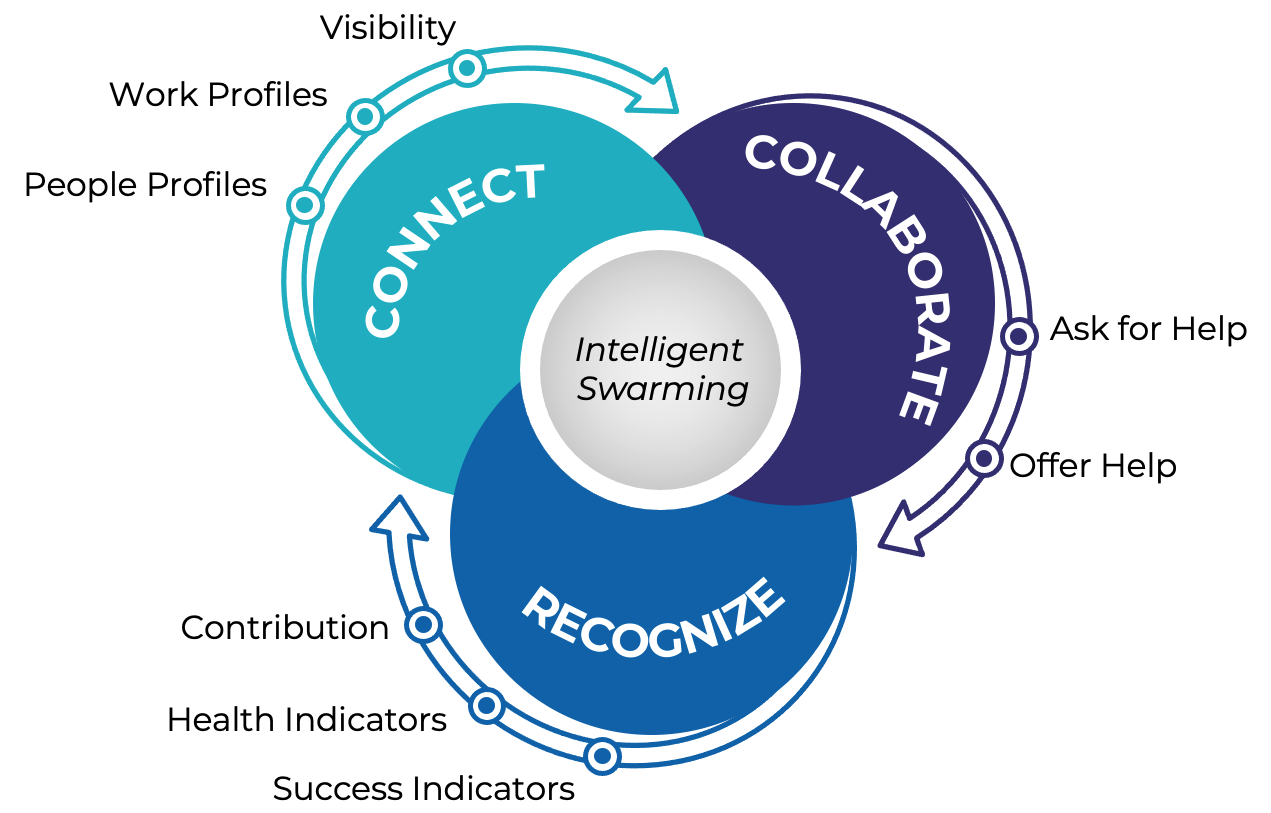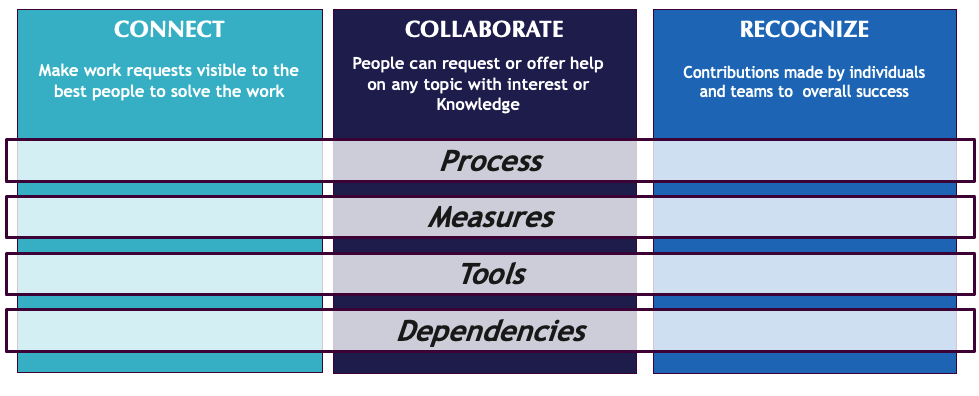Intelligent Swarming Practices
As organizations embrace Intelligent Swarming, they must make decisions on how to approach certain challenges - some of which may be unique to their business or institution. The Principles and Core Concepts are not negotiable, and act as the criteria by which we can test how well specific techniques will serve an Intelligent Swarming environment.
The swarming Practices and Design Techniques become more prescriptive. Three Intelligent Swarming Practices have emerged: Connect, Collaborate, and Recognize. These three Practices, working together, is what distinguishes Intelligent Swarming from simple collaboration. Without techniques in place to address these, an Intelligent Swarming program will flounder.

Connect
To get work to the best person to solve it on the first touch, we must have a way to make the right work visible to the right people.
- A common classification model allows us to connect people to work, people to knowledge, and people to people
- This means we need to:
- Know a lot about people (Identity, Skills, Reputation)
- Identify attributes of the work
- Be able to connect these things with our tools and processes
Collaborate
To make the act of collaboration as easy as possible, we need to design processes in which we can:
- Ask for help - make it easy to request assistance from anyone with the knowledge or skills to help
- Offer help - make it easy for anyone who has the knowledge/ability to opt in and help
Making this part of a knowledge worker's workflow is key.
Recognize
To understand how our Intelligent Swarming is working, there are several perspectives we need to consider:
- The impact that Intelligent Swarming is having on our business outcomes
- The health of Intelligent Swarming itself
- The contributions made, or value created, by individual knowledge workers and teams
- This requires a detailed understanding of all of the skills contributing to our success
- This requires a detailed understanding of the overall contribution by a team to the business outcomes
The data we can extract from the tools being used will have a huge influence on our ability to reflect on the impact of our Intelligent Swarming system.
Integration is Required
The three Intelligent Swarming Practices work together to make an implementation successful. They are related to each other, support each other, and work in unison. There is no such thing as Intelligent Swarming without all three practices.
Processes, measures, and tools influence and are influenced by each of the Practices and must be designed in context of the entire implementation. There are also dependencies, or foundational items, that are leveraged to make the three practices function. A common classification model is one example.

The Best of What We Know to Date
In the following sections, we will discuss emerging techniques for each of these design considerations.
The techniques that follow are offered as examples of how organizations have successfully implemented Intelligent Swarming. These techniques are sometimes mistaken as the only way to implement Intelligent Swarming. Turns out, there are many ways to implement the Principles, Core Concepts, and Practices. These techniques offer examples of how Intelligent Swarming works at the operational level; they are in no way meant to describe the only way to be successful.
Every implementation of Intelligent Swarming is slightly different based on the uniqueness of each environment, and new approaches to implementation are still emerging. The following sections represent the best of what we know to date as far as ways organizations have put the Intelligent Swarming Principles, Core Concepts, and Practices to work in their own adoptions of Intelligent Swarming.
